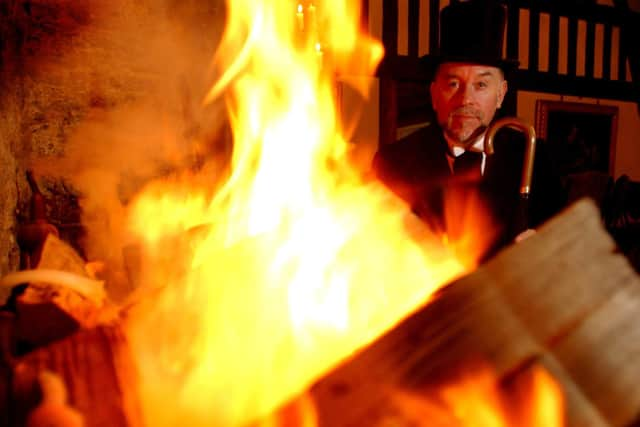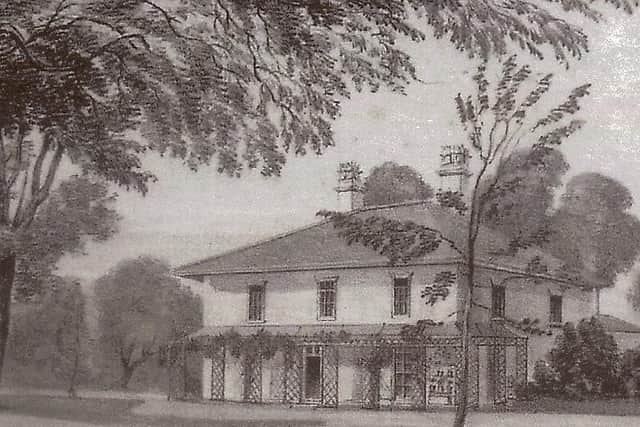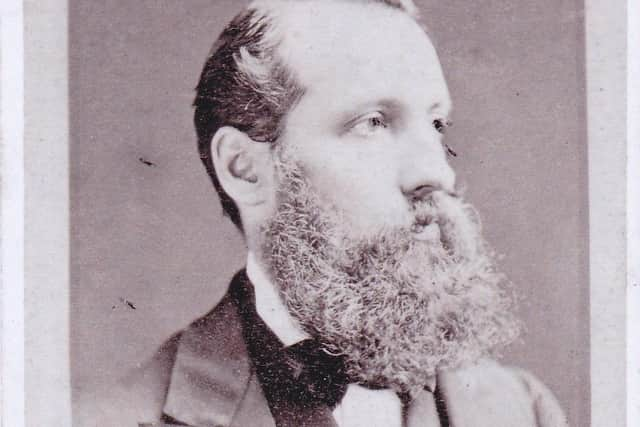On the trail of ghosts, ghouls and witches of Lancashire's villages
and live on Freeview channel 276
Whenever Halloween comes along we are likely to hear tales of ghosts, boggarts, witches, devils and haunted halls.
A century and a half ago journalist Anthony Hewitson, who had earlier visited every church and chapel within the borough of Preston and given us chapter and verse on the buildings and the occupants, embarked on a tour of the churches and chapels in the countryside around Preston.
Advertisement
Hide AdAdvertisement
Hide AdBesides the godly goings on at these places he also unearthed some tales of hauntings and spirits which had been passed down by generations of local folk.


On visiting the village of Samlesbury, Hewitson, who was editor of the Preston Chronicle, was reminded of the legend of witches there writing, ‘There were once witches in Samlesbury - at any rate people once thought so.
‘In the early part of the 17th century, eight witches, including a relative of the Southworths, who then lived at the Old Hall, were sent to Lancaster Castle for practising the devilish and wicked arts called witchcrafts, enchantments, charms, and sorceries upon a female, named Grace Sowerbutts.
‘How these miserable witches lamed cattle, sent folk into consumptions, rode the rack of night, and played eccentrically malicious tricks upon those whom they disliked, constituted stories which long obtained credence among the more superstitious people of the district, including Sir John Southworth himself, who firmly believed that at any rate his relation, Jane Southworth, was one of the enchanters, and he hardly ever passed her house doubting that she would bewitch him.’
Advertisement
Hide AdAdvertisement
Hide AdOn visiting Walton-le-Dale and the ancient church of St Leonard, originally built 850 years ago, Hewitson recounted the following tale, ‘The graveyard surrounding the church is extensive, and in the old part well nigh filled up. The year 1622 is the oldest date which can be found in the yard.


‘It is said that a weird old alchemist, named Kelly, who was in the habit of consulting the devil, or pretending to do so, got into this churchyard one night, dug up and animated the dead body of a poor man recently buried and extracted certain information from him concerning a gentleman who, during his lifetime, hid a sum of money, and died without saying where it was.’
At Great Eccleston there was a haunting tale awaiting Hewitson regarding Great Eccleston Hall and the ‘White Hall’ once owned by Thomas Westby which previously existed, he noted, ‘The remains of a moat may still be seen around the farmhouse which has succeeded and yet retains the name of Great Eccleston Hall.
‘Cross House, now the homestead of a farmer, is reported by the inhabitants of Great Eccleston and the neighbourhood to be haunted. It is said that strange and unaccountable noises have been heard in the house and on several occasions a lady, dressed in white, has appeared at a small window looking out of the attics into the garden below but upon search being made, no person answering the description of ‘The White Lady’ has ever been found.’
Advertisement
Hide AdAdvertisement
Hide AdWhile visiting the agricultural folk in the village of St. Michael’s Hewitson got into the region of St Michael’s old hall, which formerly stood a little to the south of the vicarage.


‘There are many tales told about this old hall, and among other things it is said that it was once haunted - about the time of the Pretender.
Hewitson says, ‘One of the owners of the hall was Major Longworth, and the tale goes that, after his death, for many years, he paid nightly visits to the place.
‘Indeed, he completely haunted it - played antics with doors and furniture, made noises with knives, and forks and spoons, and so astonished and alarmed the credulous souls of St Michael’s became, that it was decided to lay his ghost.
Advertisement
Hide AdAdvertisement
Hide Ad‘For this purpose the combined power of priest and parson was brought into operation; the ghost was laid under the bridge, near the hall, with the injunction that it had to remain quiet so long as ‘the water flowed down the hills, and the ivy remained green’.
‘The old Major’s ghost has not stirred since then,and it is hoped it will never again trouble the peaceful people of St Michael’s.’
In Mawdesley it was the Old Hall which brought forth a haunting tale with Hewitson writing, ‘The generality of old halls have ghosts connected with them, and so has the one at Mawdesley.
‘An old lady used to haunt the place, and she played such serious pranks that it was deemed necessary to lay her.
Advertisement
Hide AdAdvertisement
Hide Ad‘She was laid not far from the hall, the proceedings consisting of some kind of mysterious reading out and the pitching of a bottle containing a candle into an adjoining pit of water.’
When Hewitson visited Weeton and the church within he was reminded by local village folk that they laid claim to the oldest ghost in the Fylde he noted, ‘Weeton associated with the oldest ghost of the Fylde country — the hairy ghost, the Celtic equivalent of the ancient satyr.
‘At Weeton, as in many parts of the Fylde, up to a comparatively recent period, what is termed Halloween night was observed with considerable earnestness and solemnity.
‘The ceremony on the last night in October consisted of making bonfires on all the neighbouring hills. The people on these occasions kindled the fires for the avowed object of succouring their friends whose souls were supposed to be detained in purgatory. ‘
Advertisement
Hide AdAdvertisement
Hide AdVisiting Stalmine was told of the tale linked to Hackensall Hall. Remarking, ‘It is now a farm house belonging to Colonel Bourne and not much is thought of it, yet it is one of the oldest buildings in the locality.
‘This hall was at one time haunted, and the spirit which troubled it was called the ‘Hall Knocker’ - an imaginary being which finds its abode in sundry places hereabouts, and which is even now supposed to disturb the equanimity of some buildings in the township.
‘A friend, living in this quarter, recently informed me that the Hall Knocker was buried beneath an old deserted house belonging to Stalmine church.
‘And that it had earned a reputation for all manner of tricks – sometimes it would have the shippon all cleaned out before the farmer was up; at other times it would wheel a lot of manure into the buildings; and sometimes house the sheep.
Advertisement
Hide AdAdvertisement
Hide Ad‘However they got the priest to lay it and bury it. Notwithstanding the laying and the burying, it was felt the relative harmless Hall Knocker was still continuing its ghostly pranks.’
One fine day Hewitson took the train to Poulton-le-Fylde to explore the church within and while there he learned of boggart days remarking, ‘Boggarts, it may be remarked, were fashionable creatures in and about Poulton in the past.
‘In the ratio of people’s credulity, so did boggarts live, move, and have a being; and they were got up for all kinds of purposes.
‘Rev W Thornber a Poulton dweller and historian of the past having recorded that the Walmsleys of Poulton were haunted by a boggart, which always put in an appearance, with extraordinary noises, prior to the death of any member of the family.’
Advertisement
Hide AdAdvertisement
Hide AdUpon his visit to Churchtown he also heard of strange phenomenon writing, ‘Within half a mile of Churchtown, in a field called ‘Crappencrop’ there is a large boulder stone, in a ditch which, tradition says, used to turn round every time the church bells rung; but we have seen no one fortunate enough to be present at its pirouette.
‘Formerly there was a firm belief in the same place being haunted. And there are several stories about a man of enormous stature being frequently seen.
‘Near one place, in particular, it is said that horses will never pass without shying, especially after night fall; the supposition being that there is something strange which they can neither see or apprehend.’
Comment Guidelines
National World encourages reader discussion on our stories. User feedback, insights and back-and-forth exchanges add a rich layer of context to reporting. Please review our Community Guidelines before commenting.